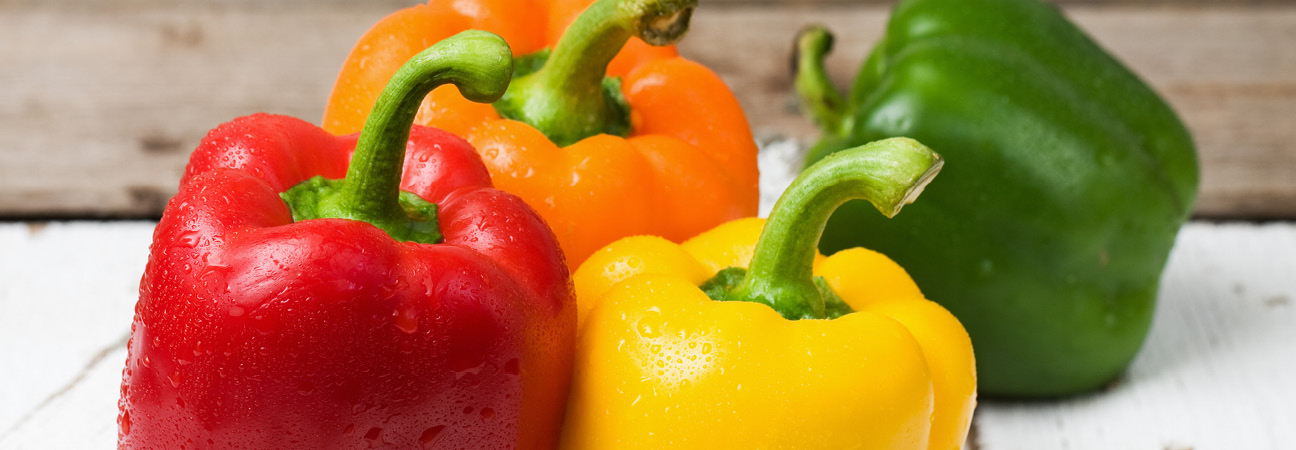The five and five of capsicums

Are green capsicums just unripe red capsicums? And do capsicums, also known as bell peppers, actually make a sound? To find out the answers to these questions, and more, read on.
Capsicums are a staple in most people’s trolleys each week: according to AUSVEG, 77 per cent of Australians purchase capsicum when shopping for groceries, and the per capita supply of capsicums is 2.9 kg per person per year. A versatile vegetable (although technically a fruit, as it contains seeds), they are a mainstay of Mediterranean cooking and along with their cousins, chillies, are important in Mexican and South American cuisine also.
Five facts about capsicums
- Members of the Capsicum genus have been used in cooking since around 6000 BC in Mexico, South and Central America.
- The Spaniards brought them to Europe in 1493 and within 100 years they became an integral ingredient in the cooking of southern Europe.
- Contrary to the urban myth, green, yellow and orange capsicums are not just unripe versions of red capsicums. Yes, all capsicums begin green, and some varieties of green capsicums do mature to a red colour, but there are also distinct varieties of green capsicums which are green at maturity. The same goes for the yellow and orange varieties.
- Capsicums are also known as bell peppers, so called because early varieties had a large stigma (the remnant female part of the flower) which would knock against the inside of the capsicum like a bell’s clapper, producing a loud knocking or clanging. Farmers were said to be kept awake at night during high winds by the bell peppers’ ‘ringing’. Bell peppers were hybridised to produce a fruit that didn’t make this sound but the name stuck.
- A mature red capsicum contains 150mg of vitamin C, which is twice the vitamin C of an orange.

